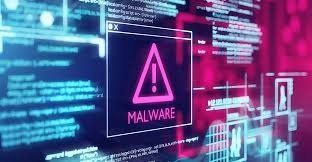Effective Malware Removal: A Critical Step in Cybersecurity

In the digital age, malware has become one of the most pervasive and dangerous threats to individuals and organizations. Malware, short for malicious software, is designed to infiltrate, damage, or exploit computer systems, often leading to severe consequences such as data theft, financial loss, and compromised privacy. While preventing malware infections is the best defence, even the most cautious users can fall victim to these malicious programs. Understanding how to remove malware effectively is crucial in mitigating the damage and restoring security.
Understanding the Threat of Malware
Malware encompasses many malicious software, including viruses, worms, trojans, ransomware, spyware, and adware. Each type of malware has a specific method of attack and purpose. For example, ransomware encrypts a user’s files and demands payment for the decryption key, while spyware covertly collects sensitive information such as passwords and credit card details. The impact of a malware infection can range from minor annoyances, like unwanted ads, to catastrophic losses, such as the permanent destruction of data.
Given the severity of these threats, effective malware removal is essential in mitigating damage and restoring system integrity. The proliferation of malware is driven by its profitability for cybercriminals, who use it to steal valuable information, extort money, or disrupt operations. As malware becomes more sophisticated and targeted, the need for robust removal strategies and proactive cybersecurity measures has never been more critical.
The Importance of Immediate Malware Removal
Once malware infiltrates a system, it can quickly spread, causing further damage and making removal more difficult. The longer malware remains on a device, the more time it has to execute its malicious functions, such as stealing data, spying on activities, or corrupting files. Therefore, prompt removal is essential to minimize harm and restore the integrity of the affected system.
Failure to remove malware promptly can lead to a cascade of problems, including identity theft, financial loss, and compromised personal and business data. In the case of businesses, a malware infection can result in operational disruptions, loss of customer trust, and potential legal consequences if sensitive data is breached.
Steps to Effectively Remove Malware
Removing malware from a system requires a systematic approach to eradicating all traces of the malicious software. Here are the key steps to effectively remove malware:
- Disconnect from the Internet: The first step in dealing with a malware infection is disconnecting the affected device. This prevents the malware from communicating with its server, spreading to other devices on the network, or exfiltrating data.
- Enter Safe Mode: Safe Mode is a diagnostic mode in Windows and macOS that loads only the essential drivers and services needed to run the operating system. Booting into Safe Mode can prevent the malware from starting up, making it easier to locate and remove.
- Run a Malware Scan: Use reputable anti-malware software to scan the system. Most anti-malware programs offer a full system scan option that thoroughly checks all files, programs, and processes for signs of malware. The software will then either quarantine or remove any detected threats. It is crucial to use up-to-date anti-malware software to ensure that it can detect the latest threats.
- Manually Remove Malware: In some cases, the anti-malware software may not fully remove the malware, particularly if it has embedded itself deep within the system. Advanced users can manually remove malware by locating and deleting suspicious files, registry entries, and processes. This method requires a good understanding of the system’s inner workings and should be cautiously approached.
- Restore from Backup: If the malware has caused significant damage or cannot be removed completely, restoring the system from a clean backup may be necessary. Regularly backing up data is crucial, allowing users to restore their system to a previous state before the infection occurred.
- Update and Patch Software: After removing the malware, it is essential to update all software and apply any available patches. Outdated software often has vulnerabilities that malware can exploit. Keeping your operating system, applications, and security software up to date reduces the risk of future infections.
Best Practices to Prevent Future Malware Infections
While knowing how to remove malware is important, preventing infections in the first place is even more critical. Here are some best practices to reduce the risk of malware:
- Use Comprehensive Security Software: Invest in a reliable security suite with antivirus, anti-malware, firewall, and web protection features. Comprehensive security software provides multiple layers of defence against various cyber threats.
- Practice Safe Browsing: Be cautious when browsing the web, downloading files, or clicking on links. Avoid visiting suspicious websites and only download software from reputable sources.
- Keep Software Updated: Regularly update your operating system, applications, and security software. Software updates often include security patches that fix vulnerabilities that malware could exploit.
- Be wary of Phishing Attacks: Phishing is a common method of delivering malware. Be cautious of unsolicited emails, especially those that ask for personal information or prompt you to click on links or download attachments.
- Regularly Back Up Data: Regular backups are essential for recovering from a malware infection. Use cloud and physical backups to ensure your data is safe and can be restored if needed.
Conclusion
Malware poses a significant threat to both individual users and businesses, with the potential to cause severe damage if not addressed promptly. Effective malware removal is critical to minimizing the impact of an infection and restoring security. By following a systematic approach to removal and adopting best practices for prevention, users can protect their systems from the ever-evolving landscape of cyber threats. Investing in reliable anti-malware software and staying vigilant against potential threats is essential to maintaining a secure digital environment.




